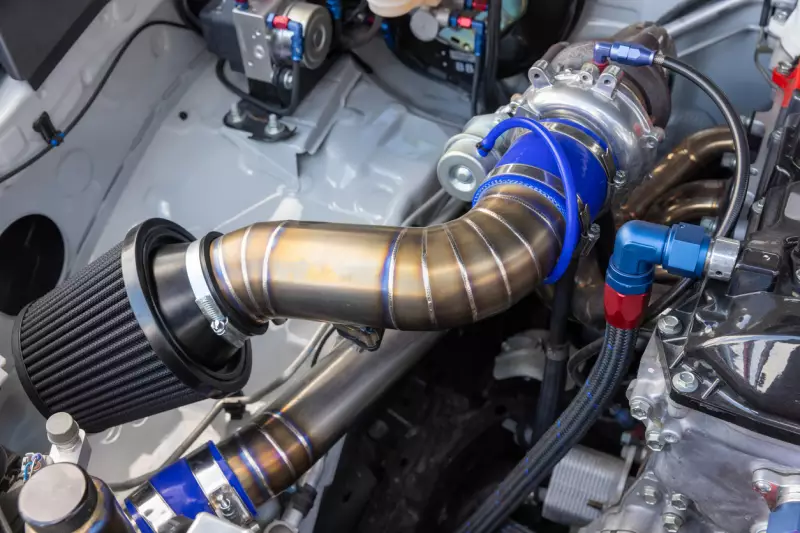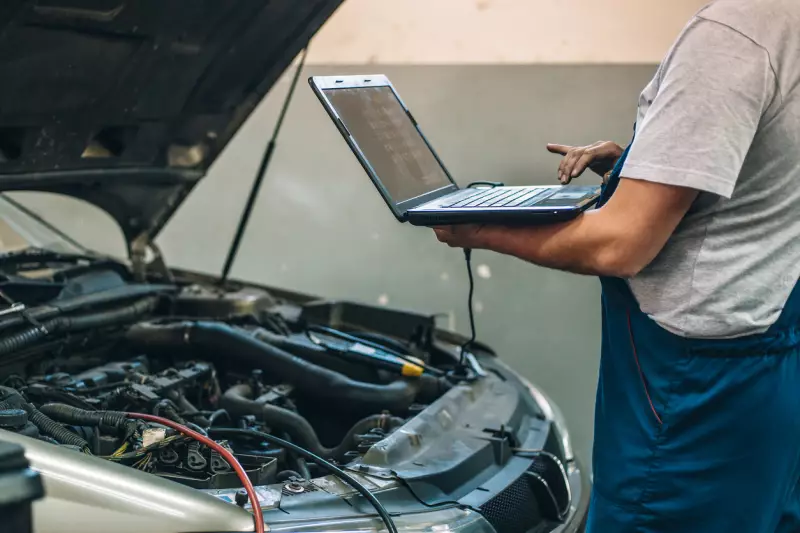From the 1920s and 30s, Americans were stripping down their Model Ts, with the fiery intent of making them lighter and faster. Car modifications have been a significant part of the cultural revolution, with tuners and enthusiasts expressing their enduring relationship to the machines they are drawn to forever.
Full Bolt On (FBO) car modifications through the decades have exhibited incredible advancements in technology. Hot Rodders continue to look for higher top-end speeds, hair-raising acceleration, and better handling using only a wrench.
According to TikTok, an FBO is defined as they’ve slapped on a tune, intake, downpipe, intercooler, and exhaust. The TikTok medium is just one of thousands promoting a better understanding of cars and the immense pleasure of building something special out of the ordinary.
A full set of FBO upgrades include mods that improve air flow, fuel delivery, and power transfer. The FBO package usually includes the following:
- Air intake systems (cold air or similar)
- Throttle body
- High-flow or ported intake manifolds
- Performance headers or intakes
- Ported catalytic converters
- Performance engine tuning
What Are Full Bolt Ons?
In the automotive landscape, the term “Full Bolt On” refers to external modifications that can be installed or removed without altering the engine. Even supercharging may now be considered a full bolt on. Common FBO components include intake and exhaust systems, intercoolers, and charge pipes. Modifications beyond the standard FBO include upgraded superchargers and turbos, methanol injection, and E85 fuel compatibility.
FBO Upgrades:
Cold Air Intake
The popularity of cold air intake systems began to skyrocket in the early 2000s, with the concept of introducing cooler, denser air leading to an improved combustion chamber and throttle body response, while increasing power and efficiency.

Cold air intake systems make a noticeable difference in boosting horsepower and increasing acceleration. Technology has advanced three main types of intake systems, including cold air intake systems, short ram air intakes, and ram air intakes.
Intake Manifolds
FBO centered intake manifolds distribute the air-fuel mixture evenly to each cylinder. Enhanced intake manifolds optimize the mix while increasing the volume and velocity of air entering each cylinder.
Performance intake manifolds improve air flow dynamics by enhancing the way air enters the engine, while optimizing fuel combustion. On average, installing a properly ported manifold will increase horsepower up to 20%.
Catless Exhaust
A Catless Exhaust System refers to an exhaust without a catalytic converter (the cats). These systems often revert to a straight pipe exhaust. Enthusiasts are drawn to a catless system because of the deep, throaty sound it produces and a significant increase in horsepower.
Without the converters restricting exhaust flow, a quality aftermarket catless downpipe may increase horsepower up to 15%. There are drawbacks to going catless, such as the overpowering odor they produce and state-by-state legal issues.
Headers
A quality set of headers is the most common FBO upgrade while adding significant power to an automobile. Headers improve on several critical engine functions, such as dramatically improving exhaust flow from the engine.
Backpressure is the resistance an engine faces when trying to expel exhaust fumes; headers dramatically reduce this pressure. Standard headers provide all cylinders' exhaust flow, while custom headers give each cylinder its own pipe to expel exhaust flows. Throttle response is also upgraded by improving the time it takes to expel exhaust gases.
ECU Tune

The Electronic Control Unit is a critical component, as it controls various system functions such as the fuel control and ignition timing. An ECU remapping adjusts engine parameters to boost installed components.
ECU remapping optimizes engine performance by improving timing and throttle response. Engine reliability is enhanced by helping to prevent premature wear and damage. Smoother power delivery is gained with a consistent rev range.
Throttle Body
Upgrading the stock throttle body with a larger, more efficient unit drastically improves air flow into the combustion chamber. With improved air flow, the engine produces more horsepower and improves acceleration.
Expect to see a minimum of 25 to 30 more horsepower and more with a supercharged application. A larger throttle body must be installed with a full ECU tune, along with tuning any other installed components.
Mass Airflow
Larger Mass Airflow sensors provide precise readings of airflow into the combustion chamber, giving the ECU better readings to control fuel delivery. A larger MAF allows for more flexibility when tuning the engine and compensates for various modifications.
When choosing the proper MAF housing, make sure the size is appropriate for the increased flow of air, but not so large as to negatively impact idle quality. Card-style MAF sensors are preferred for high-performance applications.
Injectors and Spark Plugs
When it is time to choose performance injectors and spark plugs, consider your horsepower goals, fuel types, and whether the engine is naturally aspirated or forced induction. Higher horsepower targets require larger injectors, but not so large that the injectors lead to fuel flooding.
Choosing the right spark plug is another critical component leading to a powerful engine. Understand the engine’s requirements for an upgraded compression ratio and power output. The right material is a necessary choice; look to quality copper, platinum, and iridium.
Intercoolers
No other component in a supercharged or turbocharged engine has seen its technology skyrocket. Intercoolers reduce the temperature of the heated air, making it denser and allowing the engine to run with more power. There are two types of intercoolers: air-to-air and air-to-water.
Intercoolers are a significant factor in improving engine efficiency, resulting in a major increase in power and torque while reducing knocking and detonation risk.








![Best Sites to Check a Car’s History [2025 Review]](https://media.infopay.net/thumbnails/K8lMeG2QLjE46LPqZlmoi6SunKKdT5qvlaRZk6e1.webp)










![Best Sites to Check a Car’s History [2025 Review]](https://media.infopay.net/thumbnails/K8lMeG2QLjE46LPqZlmoi6SunKKdT5qvlaRZk6e1-w356.webp)
